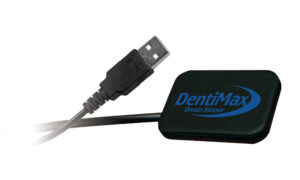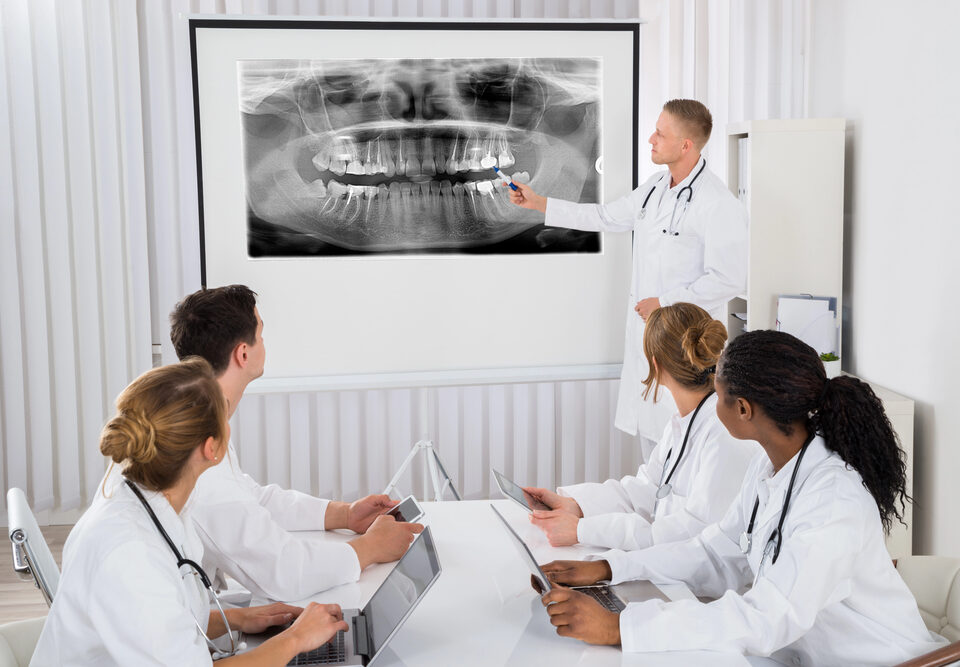In this post, our co-founder will walk you through a DentiMax dental sensor Q&A. He’ll also cover how our dental imaging products continue to grow.
Q: Tell me a little bit about yourself.
A: I am one of the co-founders of DentiMax. In 2003, I met in a reserved library room with the then head developer of Medisoft to discuss the idea of creating software that was easier to use than what was currently out in the market.
We both ended up leaving what we were doing and throwing everything we had into our new DentiMax software program. Not long after releasing DentiMax, we found that most of the doctors wanted to talk about integrated digital sensors. And so early on, we made the strategic decision to add digital sensors to our product line.
We now have a whole team of experts who know everything about digital sensors and dental imaging software. Our team has gotten so good with this technology that third parties send problem customers our way because they know our team can fix anything.
Q: What should doctors look for when they are in the market for a new sensor?
A: Most doctors are primarily concerned about the quality of the image that the sensor produces. And rightly so, the sensor should produce a crisp, clear image with good contrast and sharpness. But sometimes doctors overlook the software that comes with their sensor. The software can be kind of an afterthought but in reality, it might even be just as important than the sensor itself.
One of the key things is for your software to be open. It needs to work with your panoramic x-ray machine, your intraoral camera and other manufacturers’ sensors too.
I can almost guarantee that some time down the road, someone is going to release a new sensor that you are going to want to consider. I can’t tell you how many doctors are held hostage by the free proprietary software that came with their original sensor.
Open software is going to let you plug and play with any hardware, including any sensor. The third element is what I call post-sale support. Look, by their very nature, sensors are expensive little buggers. Even the so-called cheap ones cost thousands of dollars.
The last thing you need is for a sensor to go down and not have the proper backing from the manufacturer. Your sensor should include a multi-year warranty with a provision for the manufacturer to overnight a replacement.
Q: To guarantee the best image possible,what should a dentist look for in a sensor?
A: You are going to want to go with a new CMOS sensor vs. the CCD technology that was used with the older sensors. Beyond that, I want to say look at the sensor’s line pair measurement but there are so much misinformation and confusion between actual and theoretical measurements that this base resolution measurement almost doesn’t mean anything anymore.
Really, the best thing you can do is use a sensor with your own x-ray head and computer and see what kind of image it actually produces.
We offer a "Try Before You Buy" program with the DentiMax Dream Sensor and it just takes all of the guesswork out of it. Your staff uses the sensor with your own equipment and that’s that. The image is what it needs to be or it isn’t. The proof is in the pudding so to speak.
Q: Does patient comfort impact the design of digital sensors?
A: Yes, patient comfort is a big part of our sensor design. Thinness is important and DentiMax is one of the thinness CMOS sensor on the market. In terms of patient comfort, the biggest innovation are the rounded, beveled corners. This is huge for patient comfort, even more so than the thinnest of the sensor.
Sensors that physically have the rounded and cut corners will have a cut wafer which produces an x-ray image with cut corners too. This cut x-ray image is now common place for offices that have kept current with some of the newer digital sensors.








